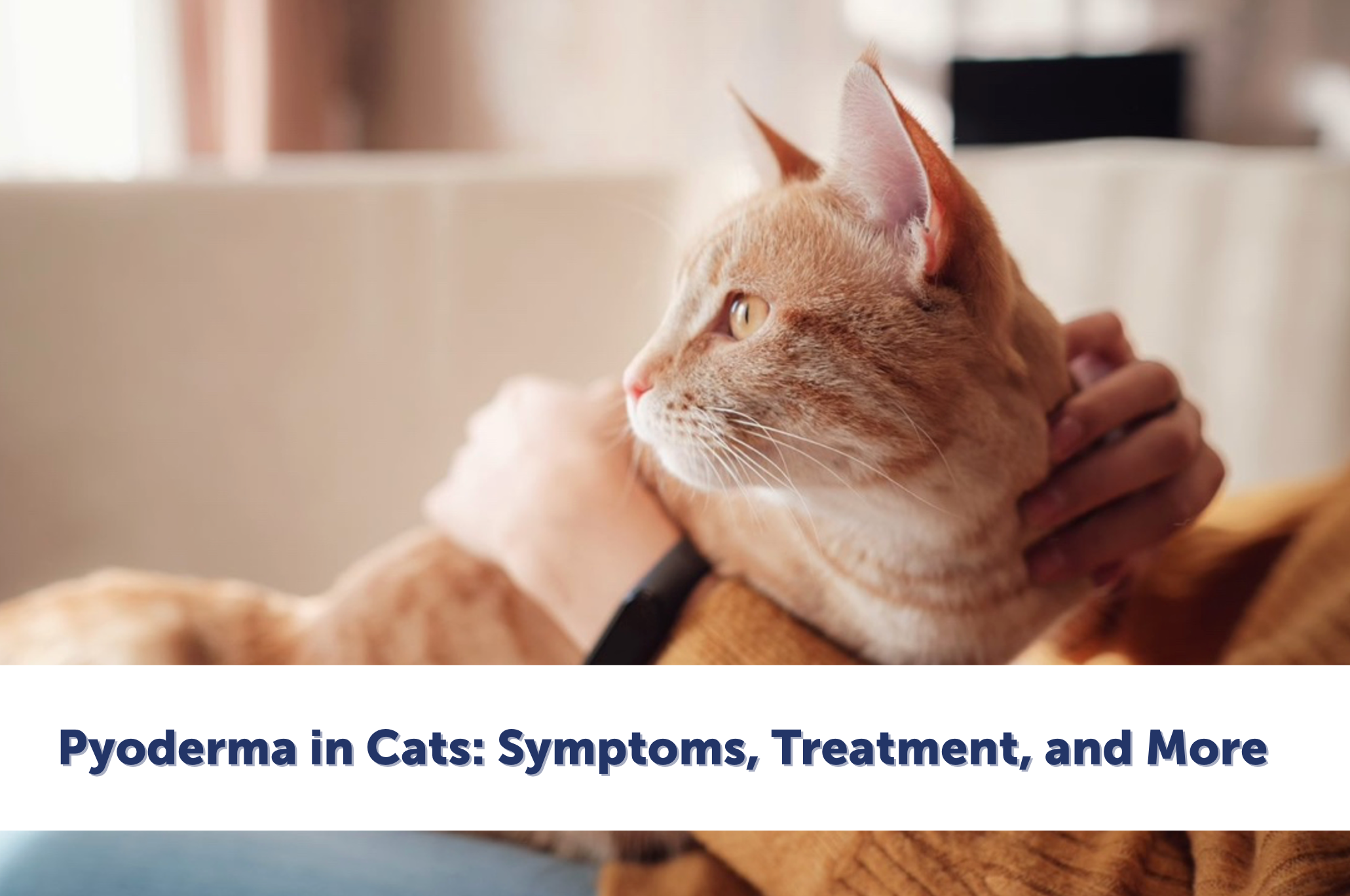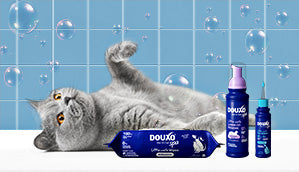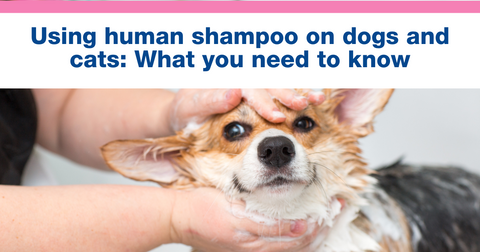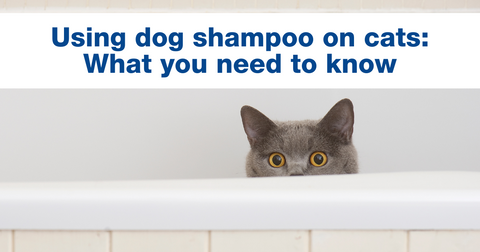
Pyoderma in Cats: Symptoms, Treatment, and More
Bacterial skin infections (pyoderma) in cats aren’t particularly common as a primary disease. They most often occur when the skin barrier is compromised in some way (for example, by itching and scratching due to another condition, leading to a cut or scratch that breaks the skin), allowing infection to take root. Pyoderma can cause crusty, sore skin and real discomfort for your cat. Luckily, most infections are treatable, with time and appropriate medications. Read on for more information about pyoderma in our feline friends!
What causes pyoderma in cats?
Bacterial skin infections in cats are usually caused by two common bacteria called Staphylococcus pseudintermedius and Staphylococcus aureus. These are long names for tiny bacteria which live on cat’s skin. They usually co-exist quite happily as “commensal” or “friendly bacteria”, normal to find on healthy cat skin and not causing any problems. However, if the skin barrier is damaged in some way, these bacteria multiply excessively and disrupt the normal bacterial balance. This is when they can start to cause problems.
Here are the main causes of skin barrier problems in cats:
- Underlying skin disease which causes cats to scratch and lick at their skin, causing self-traumatic wounds. Examples include allergies, parasites such as fleas or mites, and feline acne.
- Any disease which causes poor immunity, such as diabetes or feline leukaemia virus.
What are the signs of feline pyoderma?
While pyoderma can involve infection of the top, middle, and deeper layers of the cat’s skin, the signs and symptoms overlap. The most common symptoms include:
- Itching and scratching of the skin, causing self-trauma (scratches)
- Red areas (erythema) and spots on the skin (papules)
- Crusting and scaling of the skin, often over the cat’s lower back towards the tail
- Hair loss (alopecia)
- Open sores (ulcers) and moist open wounds (draining tracts)
In the most severe cases, your cat might seem very unwell in themselves. A fever, not eating well, and lethargy are common.
Diagnosis
Your vet may assess pyoderma mostly based on clinical symptoms and how your cat’s skin looks, but usually they will take some surface samples of your cat’s skin to look at under the microscope, or to send for culture in a laboratory, to see what bacteria or yeasts can be grown. A culture test will also usually show us how best to treat the infection.

Cat Pyoderma: Treatment Options
Once we’ve established that there is a bacterial skin infection, the next question is how to treat pyoderma in cats?
Firstly, pyoderma in cats is almost always a secondary disease, caused by an underlying health problem causing problems with the skin barrier. This primary concern must be identified and treated to prevent recurrence of the skin infection.
However, at the same time the bacterial infection must be treated. There are two main options here, and one or both may be needed depending on the severity, type and location of the pyoderma, and other factors such as concurrent illness.
Topical Treatments
Shampoos and mousses and pads are extremely useful in skin disease as the product can be directly applied to the problem area. Many conditions may not need antibiotics but can be treated solely by using topical agents such as shampoos and pads to decrease the bacterial load. Shampoos such as DOUXO® S3 PYO are carefully formulated to effectively clean the skin of debris, inflammatory products and excess bacteria. They also soothe the sore, inflamed skin, and work to repair the skin barrier to help prevent recurrence.
Antibiotics
Oral or injectable antibiotics may be needed, especially in cases of deep pyoderma. Follow the stated directions carefully, and always make sure you finish the course, to help prevent antibacterial resistance.
Anti-inflammatory Medications
Anti-inflammatory and anti-itching medications are sometimes needed alongside antibiotics and topicals in the initial phases of treatment, especially if the pyoderma is more severe. These reduce the irritation and pain, and therefore reduce the self-trauma, giving the cat’s skin the chance to heal.

Is pyoderma in cats contagious?
The bacteria that cause pyoderma in cats are often ones that are present on all healthy cats’ skin anyway, and so the bacterial infection itself is not catching. However, the underlying cause of the itching, which can lead to pyoderma, may be. Contagious causes include parasites such as fleas and mites.
Prognosis
Most cases of pyoderma have an excellent prognosis, and will resolve quickly and fully, although care must be taken to treat the underlying cause to prevent the infection returning. Deep pyoderma can be more difficult to treat, often requiring long courses of antibiotics, but the prognosis is still fair to good.
Feline Pyoderma: Key Takeaways
- Bacterial skin infections in cats are rare as a primary cause, but more common when secondary to other skin diseases which cause itching and self-trauma, such as fleas or allergies.
- Symptoms include scaly and crusty skin, red spots and hair loss.
- Treatment is based on topical shampoos to clean and soothe the skin, and some cases also require antibiotics.
To continue learning more about caring for our pets’ skin and coats, why not explore our other articles online? Or if you’d prefer to receive our latest news and updates straight into your inbox, don’t forget to sign up to our newsletter!















